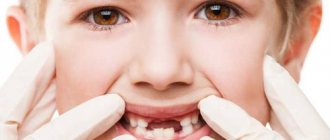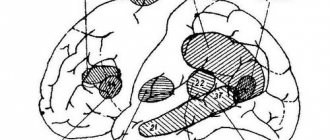In addition to speech symptoms, other changes are observed in children with neurological pathologies. Synkinesia in speech therapy is involuntary movements accompanying voluntary ones. For example, when the tongue is raised, the upper lip rises.
Similar phenomena can be observed not only in articulatory motor skills, but also in skeletal muscles. Especially in the areas associated with the speech centers of the cerebral cortex. Sometimes during a conversation a child moves his fingers, although this is not necessary - this is synkinesis. Such involuntary movements are one of the signs of complex speech disorders.
Kinds
There are several types of involuntary accompanying movements that can occur in people with speech disorders.
- Synkinesia of facial muscles. The cause of their occurrence is pathology of the facial nerve. Muscle tension occurs, leading to involuntary contraction. This pathology appears not only at the moment of speech, but also during movements in which the facial muscles are involved (chewing, blinking, etc.).
- Oral synkinesis can be observed in infants. This is a normal phenomenon that goes away by the end of the 3rd month of life. But if they persist, they can have a detrimental effect on the formation of articulatory motor skills, which will lead to impaired sound pronunciation.
- Pathological synkinesis is a reflection of the actions of a healthy limb. For example, when you raise your right leg, your left leg involuntarily rises. Or, during speech, a leg or arm twitching occurs.
Synkinesis often accompanies dysarthric disorders, especially when a person experiences strong psycho-emotional stress. Articulatory motor skills are impaired, and sometimes hypersalivation (excessive drooling) appears.
When diagnosing, a speech therapist notes the presence of tremor (shaking) of the tongue, disruption of the facial muscles, and involuntary movements of the lower jaw. Corrective work on overcoming synkinesis in speech therapy is carried out in parallel with other types of work for speech disorders.
Classification of general speech underdevelopment in speech therapy
In terms of clinical composition, the category of children with general speech underdevelopment is heterogeneous. Speech therapists distinguish the following forms of pathology:
- uncomplicated forms of general speech underdevelopment in children with minimal disorders of brain function - insufficient regulation of muscle tone, immaturity of the emotional-volitional sphere, motor differentiation);
- complicated forms of OHP in children with psychopathic and neurological syndromes - cerebrasthenic, convulsive, hypertensive-hydrocephalic, hyperdynamic;
- gross underdevelopment of speech in children with organic lesions of the speech parts of the brain (with motor alalia - the absence or underdevelopment of speech in children with normal hearing and initially intact intelligence).
The following classification of speech disorders in speech therapy is currently used:
- the first level of speech development is “speechless children” who lack common speech;
- the second level of speech development - the initial elements of common speech, a poor vocabulary, and the phenomena of agrammatism are determined - speech disorders manifested in difficulties in generating or perceiving sentences;
- the third level of speech development is the appearance of expanded phrasal speech with underdevelopment of its semantic and sound aspects;
- the fourth level of speech development – residual gaps in the development of the lexical-grammatical and phonetic-phonemic aspects of speech.
Etiology
Previously, doctors and speech therapists believed that it was impossible to cope with this pathology. It was believed that the cause was an irreversible disruption of the innervation of the facial nerve. But further research and clarification of the definition showed that the etiology of synkinesias is extensive, and accordingly, methods can be selected to overcome them. Causes:
- Disorders of the central nervous system (CNS).
- Disorders of the cerebral cortex (CGM).
- Violations of general muscle tone.
- Dysarthria.
- Pathological reflexes.
- Suffered a stroke.
- Improper functioning of facial muscles.
- Traumatic brain injuries.
All of these reasons are serious and require medical knowledge to choose the right treatment. Therefore, children with a history of synkinesis are provided with comprehensive care, including medical care. This increases the efficiency of correction work.
Spasticity
WITH
pastic paresis is the main cause of disability in neurological patients, as it develops in most diseases and injuries of the central nervous system.
At the same time, the patient’s physical activity is primarily limited by the paresis itself, but severe spasticity significantly aggravates motor disorders, further reducing the patient’s functional capabilities. Once developed, spastic paresis usually persists throughout the patient's life. This symptom complex is the main clinical manifestation of upper motor neuron syndrome
, which, in turn, includes two groups of phenomena: positive and negative.
Negative signs of upper motor neuron syndrome include weakness, loss of dexterity, and fatigue. This set of symptoms causes a decrease in the patient’s motor activity and is essentially the main manifestation of paresis, the main symptom of upper motor neuron syndrome. Negative phenomena are not amenable to any methods of rehabilitation.
The positive phenomena of upper motor neuron syndrome can also cause disability, but they respond to treatment to a certain extent. These signs include: spasticity, tendon hyperreflexia with expansion of the reflexogenic zone, Babinski's symptom, clonus, spasms, dystonia and contractures, dyssynergia.
From a pathophysiological point of view, such a division of the components of upper motor neuron syndrome is justified, since its positive phenomena are caused by the release of more or less intact motor subsystems from central control, while most negative phenomena are a direct result of the separation of lower motor centers from higher ones. In applied terms, until methods for functional regeneration of the central nervous system have been developed, the attention of modern researchers is focused on improving therapeutic manipulations aimed at intact motor subsystems located caudal to the damage. Their study will allow the use of rational pharmacological and physiotherapeutic interventions, primarily to reduce spasticity.
According to modern concepts, spasticity occurs mainly due to a decrease in the activity of several spinal inhibitory systems
, to a lesser extent - as a result of increased excitability of some segmental formations. The established mechanisms that form spasticity are presynaptic disinhibition of GABAergic 1A terminals, a decrease in glycinergic reciprocal inhibition, hyperexcitability of α-motoneurons, hypoexcitability of 1B-interneurons and disorganization of postsynaptic glycinergic inhibition.
Terminology
It is currently difficult to give an exhaustive definition of spasticity, taking into account the mechanisms of its formation, since the neurobiology of the motor system has not been studied in many respects. The solution to this problem in the future, apparently, will make it possible to identify separate varieties of this type of muscle hypertension, today known by specialists under the general name of spasticity syndrome. At the same time, for a neurologist, phenomenologically, this is a relatively clear question, since currently, within the framework of the spastic paresis syndrome, the symptom complex of spastic dystonia is distinguished, the syndromes of cerebral or hemiplegic are distinguished from spinal or paraplegic spasticity, and severe spastic dystonia is differentiated from skin-induced spasms.
However, despite some terminological difficulties, the key symbol of spasticity is the velocity-dependent increase in the resistance of a muscle or muscle group to passive stretch. Modern authors associate this phenomenon with a change in the descending activity of overlying motor centers to the mechanisms of formation of the segmental stretch reflex. Disturbances in this mechanism may reflect changes in the threshold and/or an increase in this reflex in response to stretch.
Heterogeneity of spastic paresis
It should be noted that all patients with central paresis are similar, since they all have two of its main symptoms - paresis
and
spasticity
. At the same time, there are many variations due to the localization of the lesion, the nature of the damaging factor and the characteristics of the course of the main pathological process. In this regard, patients with cerebral and spinal spastic paresis are indicative, which are characterized by a similar distribution of tonic disorders in the affected limbs, but different changes in posture and gait pattern.
Clinical manifestations of spastic paresis depend not only on the level of damage to the descending motor tracts (spinal or cerebral), but also on the nature of their pathology. In this case, this symptom complex can be a consequence of both a break in the fibers of the motor systems (traumatic brain injury, stroke) or their compression (tumors), and the result of a demyelinating process (relapsing-remitting multiple sclerosis), axonal degeneration (amyotrophic lateral sclerosis, Strumpell’s familial paraplegia) and combinations of the last two processes (primary and secondary progressive multiple sclerosis).
Demyelinating and axonal variants of damage to the descending motor systems differ in the clinical characteristics of paresis and response to treatment. So, with multiple sclerosis
there is instability in the severity of individual symptoms (including spastic paresis) and a good effect of pathogenetic therapy (corticosteroids, plasmapheresis) in relation to all symptoms of the disease. In addition, in multiple sclerosis, there is a dependence of the severity of spasticity on the patient’s posture. When examining muscle tone in these patients in the supine position, spasticity is often mildly expressed, while when walking it increases significantly.
For degenerative diseases
, which are characterized by pathology of the motor fiber axon as a result of damage to the cortical motor neuron or primary axonal degeneration, there is a steady progression of the disease and, accordingly, an increase in the severity of spastic paresis from the very beginning of the disease. There is no pathogenetic therapy for all these diseases. Moreover, in patients with, for example, amyotrophic lateral sclerosis, the main component of spastic paresis syndrome is a decrease in muscle strength. On the contrary, familial spastic paraplegia is characterized by the predominance of muscle hypertension over the severity of paresis, and therefore these patients retain the ability to move even in the later stages of the pathological process. These differences are apparently due to damage to different types of fibers of the pyramidal tract, since in the first case the destructive process is localized mainly in thick, phasic fibers, in the second - in thin, tonic fibers.
Spastic dystonia
Clinically, spasticity is detected only when hypertonic muscles are stretched, and the greater the speed in the process of studying the tonic stretch reflex, the more clearly and reliably this symptom is recorded. Thus, with spasticity, there is resistance to stretching and lengthening of the affected muscle
. In this case, two important circumstances should be taken into account. First, a spastic muscle tends to remain in a shortened position for a long time, which can lead to the formation of contractures. Secondly, attempts at various movements are usually limited due to not only tonic disorders, but also paresis. In this situation, the limb takes on an abnormal position. Thus, with hemiplegia, the upper limbs are bent and pressed against the body, while the legs are extended; with paraplegia, the lower limbs are extended and crossed or bent; With tetraplegia, the arms and legs are bent. Such static changes in tone are designated by the term spastic dystonia (hemiplegic and paraplegic spastic dystonia). This term is useful when you want to emphasize the chronic contraction of individual muscles. It should be emphasized that spastic dystonia manifests itself not only at rest, but also during walking, and its implementation occurs due to the formation of hemi- and paraparetic nature of gait. However, using this terminology, it should be remembered that dystonia also refers to disorders of muscle tone that are observed in some extrapyramidal diseases, but they are revealed only during the examination of the tonic stretch reflex by a doctor and are accompanied by other subcortical symptoms.
Soft tissue changes and contractures
Limitation of range of motion with central motor disorders is not always a simple consequence of paresis and muscle hypertension. In such patients, changes may develop in the soft tissues of the affected limbs, including tendons, ligaments, and joints, leading to a decrease in their flexibility. It is obvious that contractures due to changes in the soft tissues are the result of prolonged exposure to spastic muscles in a contracted position.
However, changes in soft tissues are not always caused by spastic hypertension; they may also have a more independent significance in the formation of the phenomenon of spastic gait. This allowed the authors to suggest that in some cases, the so-called spastic gait may occur, most likely due to changes in the rheology (internal properties) of the muscle itself, rather than due to an increase in the stretch reflex.
There is an opinion that maintaining a full range of motion in the joints of the affected limbs can significantly prolong the period of development of contractures due to changes in soft tissues. It is important to emphasize the good condition of those spastic muscles that have been in a state of full stretch for a long time every day. There are recommendations to bring these muscles to full stretch for 2 hours every 24 hours.
Thus, muscle hypertension associated with abnormal muscle rheology often has a neural component (secondary to spasticity) and a biomechanical component (secondary to soft tissue changes). It is obvious that biomechanical hypertension does not depend on the speed of muscle stretching and limits movement even at slow speeds. Moreover, biomechanical hypertension does not respond to antispastic agents and responds only to physical therapy, stretching of the paretic limb, comfortable positioning, orthoses, and physical manipulation. In some cases, surgery may be necessary to remove obstructions and prevent soft tissue contractures. In practice, a mixed form of neural and biomechanical hypertension is more common, and it can be very difficult to clinically distinguish the contribution of each component. Active intervention of spasticity (anti-spasticity medications or local treatment such as botulinum toxin injections) can mitigate at least the neural component of hypertension. This effect is achieved even with fixed contractures in the limbs.
With long-term spasticity, changes in soft tissues, which are the most disabling for the patient and resistant to treatment, are recorded especially often. Increasing limb deformity often leads to rapidly decreasing function, resulting in problems with hygiene, positioning, ambulation and nutrition, leading to a high susceptibility to various complications.
Urinary disorders
Urinary disorders have a significant impact on the condition of patients with lower spastic paraparesis. The connection between urinary retention and the intensity of spasticity is noteworthy, since the latter sharply increases with acute or prolonged inability to carry out this process. A similar picture in such patients can develop with acute bladder infection. Due to the fact that the risk of developing urological infection is often associated with urinary retention, timely catheterization of the bladder in these individuals is important. In this case, it is advisable that the patient be trained to perform this manipulation independently.
Speech and swallowing disorders
Most of the consequences of damage to the upper motor neuron in functional terms are manifested in the arms and legs; on the contrary, spasticity of the muscles involved in the formation of acts of speech and swallowing is recorded less frequently, and, as a rule, within the framework of pseudobulbar syndrome, but they can create more problems for the patient. In this case, difficulties arise in the process of eating (dysphagia) and during communication (dysarthria). Due to swallowing disorders, there is a risk of aspiration with subsequent development of pneumonia. These patients find it easier to swallow and speak in an upright and sitting position.
Pain
This symptom is not common in patients with spastic paresis. However, with significantly pronounced muscle hypertension, patients often complain of nagging pain in the legs. However, the pain can be acute if the clinical picture includes flexion and extension spasms. In this case, there is a need for periodic use of analgesics. Long-term improper positioning of a paralyzed limb can also cause pain due to accompanying changes in muscles and joints. It should be noted that not only neurogenic and local processes can cause pain, but also periodic stimuli of any nature. Thus, an ingrown toenail or tissue damage caused by compression can cause deepening of muscle hypertension and start a vicious circle that increases pain and further aggravates spasticity.
Caring for the sick and the problem of care
Spasticity is one of the unusual situations that requires treatment of a disabled patient, including for the sake of caring for him. Such patients have difficulty moving, and caring for them is extremely difficult. Moving within an apartment and sitting in a wheelchair is often very difficult. Spasticity in the adductor muscles of the thighs greatly complicates the care of the catheter and perineum, spastic dystonia or contracture of the finger flexors complicates the care of the palm. The foregoing allows us to conclude that treatment of muscle hypertension reduces the burden of caring for such patients, however, the effectiveness of therapy at home or in a hospital may vary.
Treatment and rehabilitation
When discussing approaches to the treatment of spasticity, it should be borne in mind that this is a very dynamic phenomenon. In this regard, therapy for such patients should not only be individual and carefully planned, but also constantly monitored. Treatment is usually complex. Medical specialists, social workers and the patient’s relatives take part in its implementation.
Due to the fact that the treatment of spasticity is mainly symptomatic, it is necessary first of all to determine the goals of therapy. In this case, the first question that should be resolved is whether it is necessary to treat these disorders at all, since spasticity can often be useful in functional terms, allowing the patient to move and dress. Apparently, in this situation, spasticity should not be treated, although from a neurophysiological point of view it is a pathological phenomenon.
In cases where rehabilitation measures are necessary, the physician should discuss treatment goals with the patient. In this case, the most general goals are to improve the ability to move, reduce the intensity of pain, and prevent the formation of soft tissue contractures. The specific goals of treatment should be clearly explained to the patient, since he must be an active participant in their implementation and aimed at a specific result.
Patients with spastic paresis require long-term treatment, so it is necessary to regularly review the goals and objectives of therapy, identify new goals and clarify old ones. This is especially important in the case of long-term use of muscle relaxants, since often the side effects of treatment can outweigh the positive results of therapy.
For more successful rehabilitation measures, it is important that the patient and his family members have a certain level of knowledge about the essence of upper motor neuron syndrome, which includes a complex of phenomena. It is necessary to make the patient aware of certain factors that can aggravate his condition, for example, inappropriate position of a paretic limb, ill-fitting shoes, a heavy blanket, too soft a bed. Knowing the negative potential of these or other similar situations allows the patient to prevent or alleviate many functional problems. It is also important that the patient is informed about factors that increase motor deficits, such as urological infections (primarily bladder) and constipation.
Physical methods of treatment play a significant role in the rehabilitation strategy of patients with spastic paresis.
. It is important to start treatment as early as possible. There are many potential interventions for these patients, ranging from simple passive movement exercises to more complex physical therapy treatments. A physiotherapist may recommend symptomatic treatment with heat, water procedures, and prescribe fixation of paralyzed limbs in a certain position. Taking into account the latter circumstance, it is advisable to involve an orthopedist in the treatment, since many functional problems can be resolved by using an adequate orthopedic device. World and domestic experience suggests that the active participation of a physiotherapist and orthopedist in the rehabilitation process of patients with spastic paresis makes it possible to achieve many goals before moving on to medication or local invasive treatment.
The main treatment for spastic muscle hypertension is medication.
. In this case, muscle relaxants can be used both as monotherapy and as part of a general rehabilitation strategy (the latter approach is used more often). These drugs provide a useful baseline effect that allows, for example, to place a paralyzed limb in the most comfortable position or to adequately use an orthosis. Sometimes, especially in mild spasticity, the use of muscle relaxants can be effective as monotherapy to reduce functional problems such as clonus. At the same time, antispastic drugs also have side effects (intolerance and increased general weakness). Spasticity is often a local problem, while muscle relaxants have a systemic effect. In this situation, the paretic muscles may relax excessively and the overall functional effect may worsen the motor neurological deficit. Thus, muscle relaxants can sometimes reduce some of the positive effects of upper motor neuron syndrome, while at the same time exacerbating some of the negative symptoms. That is why the goal and objectives of treatment require detailed discussion, strict use of drugs according to indications and monitoring.
Benzodiazepines and benzothiadiazoles are mainly used to treat spasticity: tizanidine (Sirdalud)
, capable of inhibiting polysynaptic reflexes with less influence on monosynaptic ones.
Muscle relaxant effect of diazepam
associated with its interaction with GABA receptors of spinal cord neurons and an increase in neuronal hyperpolarization. When prescribing this drug, it is recommended to gradually increase the dose, starting from 2 mg 3 times a day to 10 mg per dose. Diazepam corrects only one of the pathophysiological mechanisms, therefore, if spasticity is caused by other components, for example, the absence of reciprocal glycinergic inhibition, the improvement may be insignificant.
Baclofen
chemically close to GABA, stimulates GABA B-inhibitory receptors, inhibits the release of excitatory mediators, inhibits mono- and polysynaptic reflexes. Treatment begins with 5 mg 3 times with a gradual increase in the total dose to 30–75 mg per day. It is also possible to prescribe a combination of baclofen and diazepam, which provides a greater therapeutic effect with lower doses of drugs. Due to the fact that baclofen reduces the intensity of the stretch reflex, the drug reduces clonus and painful involuntary muscle spasms. When discontinuing the drug, a gradual dose reduction is necessary to prevent hallucinations and seizures.
Tizanidine (Sirdalud)
, unlike diazepam and baclofen, acts on a larger number of neurophysiological and neurochemical mechanisms involved in the formation of spasticity, which ensures its more significant effectiveness. This drug has a central muscle relaxant effect, namely it excites a2-adrenergic receptors, mainly at the level of the spinal cord, reduces the release of excitatory amino acids from interneurons of the spinal cord, and selectively suppresses polysynaptic mechanisms responsible for muscle hypertonicity. Tizanidine affects spinal and cerebral spasticity, reduces stretch reflexes and painful muscle spasms. It reduces resistance to passive movements, reduces spasms and clonic convulsions, and increases the strength of voluntary contractions of skeletal muscles. It should be noted that this drug not only does not reduce muscle strength, but, according to some authors, increases it to some extent. Side effects are minimal. The drug is used at a dose of 2 mg 3 times a day, the dose can be increased to 4 mg or more per dose. In addition to muscle relaxant properties, tizanidine also has a moderate central analgesic effect.
Other antispastic agents include tolperisone.
– a centrally acting muscle relaxant that has an inhibitory effect on the caudal part of the reticular formation and has H-cholinergic properties. Used in a dose of 150–450 mg 3 times a day.
Dantrolene
reduces the release of calcium from the sarcoplasmic reticulum, thereby preventing the contraction of myofibrils. Since this drug causes weakness in proportion to the decrease in spasticity, it is used in bedridden patients whose care is difficult due to severe muscle contractures.
In clinical practice, patients with spastic paresis are often observed, in whom changes in muscle tone are expressed predominantly in one or several muscle groups. For example, in the case of spastic dystonia. In this situation, the systemic effect of oral muscle relaxants is undesirable, so local methods of influencing spasticity are preferable. Several years ago, the world paid much attention to such local technologies as phenol and alcohol blockade of peripheral nerves
.
Recently, local injections of botulinum toxin type A
, including in Russia.
Sometimes spasticity may be resistant to oral muscle relaxants and botulinum toxin type A. In this case, intrathecal baclofen is used. For this purpose, a special pump is used, implanted subarachnoidally, which administers the drug in doses. The method is widely used in the West, and in some centers - as a complement to local technologies, such as the introduction of botulinum toxin type A. This therapeutic approach is not dangerous, although undesirable effects associated with pump failure or disruption in the catheter system are possible. The main limitation of this technology (including in Russia) is the high cost of the implanted system.
surgical approaches to treat spasticity.
, for example, rhizotomy, but currently it is practically not used. At the same time, with such undesirable effects of spastic hypertension as soft tissue contractures, this issue can be discussed.
Motor disorders (paresis, spasticity) often lead to immobilization of joints and the development of capsulitis, bursitis and tendonitis in them. Cramps, spasms and increased muscle tone also cause discomfort to patients. The inability to change body position leads to constant pressure on the skin, bones and joints, which also causes pain. The pain can be localized in the neck, back, limbs, and is dull, burning, or resembles an electric current.
The main method of treating pain syndrome is physiotherapy
. As part of drug therapy, analgesics are prescribed, including non-steroidal anti-inflammatory drugs (Voltaren, etc.), anticonvulsants (Tegretol, etc.) and tricyclic antidepressants. The combination of these drugs is especially effective.
Patients with spastic paresis, regardless of the reasons for their development (acute or chronic diseases and damage to the central nervous system), may develop symptoms such as fear, anxiety, and depression. First of all, in such a situation, psychological support is required both from medical personnel and the participation of relatives of patients.
In terms of pharmacotherapy, drugs from the benzodiazepine group are more often prescribed, since they have a lower risk of developing drug dependence and subsequent withdrawal syndrome. For patients with dominant depressive syndrome, antidepressants are recommended.
Conclusion
Thus, to solve the main problem of treatment and rehabilitation of patients with spastic paresis (increasing physical activity and the ability to self-care), careful planning and monitoring of this process is necessary. At the same time, along with medications, various types of exercises, as well as physiotherapeutic methods, are used to treat the underlying disease and symptomatic treatment of spasticity. In addition, various auxiliary adaptive equipment is used to fix certain areas of the body, to increase the ability to move, as well as various devices for the patient’s self-care. The management of these patients requires a multidisciplinary approach, and in the process of treatment and rehabilitation it is necessary to include not only a neurologist, physiotherapist and orthopedist, but also a social worker, the patient himself and his relatives.
Features of speech therapy diagnostics
The presence of involuntary accompanying movements can also be identified during a speech therapy examination. To do this, check the condition of the motor sphere: general, finger, articulatory and facial.
Gross motor assessment
To evaluate it, they offer exercises for statics (holding) of a certain pose and dynamic tasks:
- standing alternately on one leg for a count of 5;
- stretch one leg and arms forward, close your eyes and try to maintain this position for a count of 5;
- jumping in place;
- running in place;
- march to the count while raising your legs and arms.
The specialist pays attention to coordination and the presence of accompanying movements: for example, when raising a leg, the child may stick out his tongue, or when standing on one leg, the other tries to straighten, etc. The child’s condition is also assessed: how quickly he gets tired, how he reacts if the task does not work out . Sometimes children with muscle tone problems may refuse to perform tasks because they experience physical discomfort. For example, there may be pain when straightening a leg or arm. All this is a sign of a violation of the general motor sphere.
Finger motor assessment
Many studies have proven that finger motor skills are associated with the work of speech centers. Therefore, special attention is paid to it in correctional work. If a child has difficulty mastering subtle differentiated movements with his fingers, then he may have difficulty forming sound pronunciation.
All exercises are performed in a certain sequence. First they do it with the right hand, then with the left and with both at the same time. You need to hold the poses for a count of 5.
- Keep your palm straight with your fingers close together in a vertical position.
- A similar task, only the fingers are spread apart.
- Extend your thumb and little finger.
- Make a “bunny” pose - put out your index and middle fingers, gather the rest into a pinch.
- The index and little fingers are straightened, the rest are gathered into a fist.
- Place your middle finger on your index finger.
- Connect all fingers one by one with the thumb (“Ring”). First on one hand, then on the other and on both at the same time.
- The fingers are clenched into a fist and unclenched several times.
- The palm is placed on the table and the fingers are connected and separated.
- Make a ring out of your fingers, then open your palm 5-8 times.
- One hand is in the “open palm” position, the other is clenched into a fist. Then they change places and repeat this several times.
While performing the above exercises, the speech therapist pays attention to the accuracy of their implementation; coordination; difficulties in switching. Synkinesis can manifest itself in conjugal movements of facial muscles (for example, lowering the lower jaw, raising the tongue, etc.) or simultaneous performance of all tests on both hands.
Assessment of facial muscles
Often, with severe speech disorders, there is a violation of facial motor skills. To test it, the child is asked to depict emotions of surprise, anger, sadness, joy. When performing this task, facial and oral synkinesis may appear. Before performing, the child is shown pictures depicting these emotions if he has difficulty understanding the instructions.
Articulatory motor assessment
For testing, they offer tasks to hold a pose and test the dynamic side.
- Make your lips a tube, round them, smile.
- Open your mouth wide and close it several times.
- Place your wide tongue on your lower lip.
- Pull out the narrow tongue.
- Raise and lower your tongue.
- Move your tongue left and right.
- Hold in a “Cup” shape.
- Suck the tip of your tongue to the roof of your mouth (“Mushroom”) and hold it in this position.
- Make a “Mushroom” and raise and lower the lower jaw.
- Make a "Horse".
While performing the exercises, the specialist looks at the accuracy of the movements; switching features; the presence of tongue tremor and the state of its muscle tone. With dysarthria, synkinesis may appear during testing of articulatory motor skills. For example, when the child lowers his tongue, his forehead wrinkles or his upper lip droops; other types of involuntary movements may also occur.
Treatment methods
It will not be possible to completely get rid of spastic syndrome, but you can make sure that the spasms bother you as little as possible and do not interfere with your everyday life. There are several areas of treatment:
- Therapeutic physical education (physical therapy). In fact, it is the only truly effective method of combating spasticity that gives lasting results. You need to regularly perform a set of muscle stretching exercises: stretch your toes, do circular rotations with your feet, straighten and bend your legs in a sitting position, bend your torso, lift your legs one by one, bend your knees in a position on your stomach. For exercise therapy, you can and should use various auxiliary equipment: balls, benches, hand controls, various exercise machines and other useful devices.
- Surgical procedures. There is a temporary solution that surgeons can offer - tendon trimming. For a while, the spastic syndrome actually disappears, but then it returns and becomes even stronger. Do not rush to agree to this operation until you weigh the pros and cons.
- Pills or injections. Medications can calm painful cramps. But the duration of action of drugs usually does not exceed 2-3 hours, and after prolonged use the drugs will become completely ineffective. In addition, due to medications, spastic manifestations can become stronger and more intense.
Exercise therapy and lying on your stomach with a pillow under your chest are the simplest and at the same time the most effective means against increasing spasticity. This treatment has no side effects or risks. In addition, if a person with a disability buys technical means of rehabilitation himself, then he can receive compensation from the state for their cost through social services. For more detailed information, please contact our consultants.
Corrective work
To overcome synkinesis you need a complex effect. These are exercises to improve general motor skills and relax muscle tone. Therefore, such patients are often recommended to take up swimming, because it has a beneficial effect not only on motor activity, but also on the nervous system.
Children with synkinesis attend exercise therapy classes and undergo courses of therapeutic massages prescribed by the doctor. If they manifest themselves in articulatory and facial motor skills, then a course of speech therapy massage is added. It should only be performed by a speech therapist who has completed special courses. At home, you can do simple self-massage, which also has a beneficial effect on the facial and articulatory muscles.
For dysarthria, drug treatment is prescribed. It not only stimulates the work of speech centers, but also affects the state of muscle tone.
The sooner parents seek advice from a specialist, the more effective the correction work will be. Overcoming synkinesis has a beneficial effect not only on speech activity, but also on the nervous system and muscle tone.
The main advantages of botulinum therapy:
- Locality of effect - the drug affects the target muscles, and not systemically throughout the body
- Possibility of injection into any accessible muscle to achieve the effect of anesthesia and local muscle relaxation
- Good treatment tolerance
- Safety
- No systemic side effects
- Long duration of action (from 2-3 to 6-8 months)
- According to the standard, botulinum therapy is performed under ultrasound or EMG control for more accurate administration of the drug into the target muscles.








